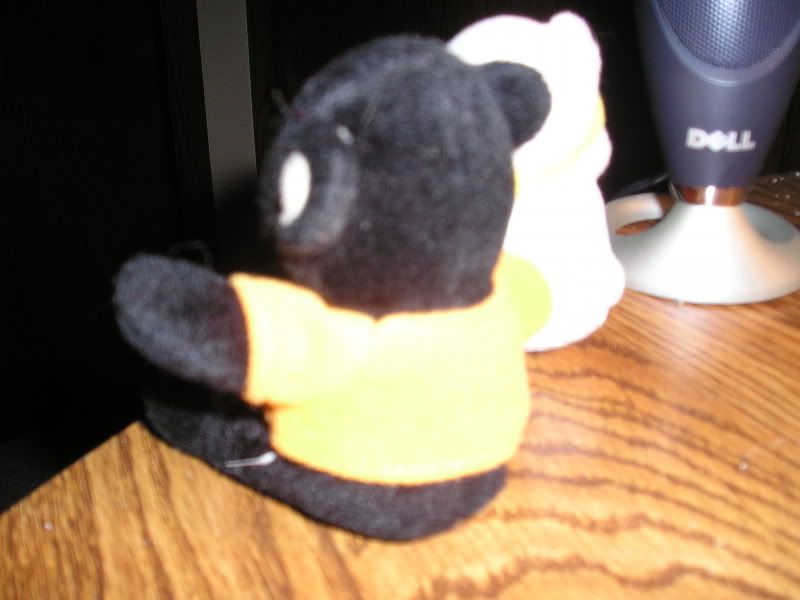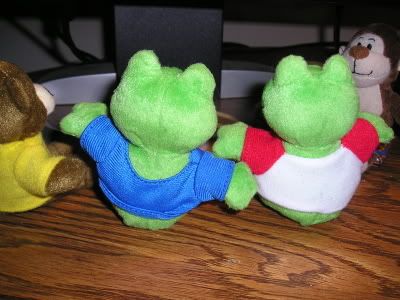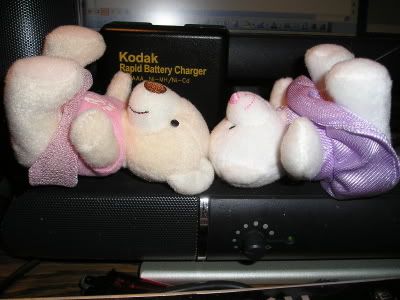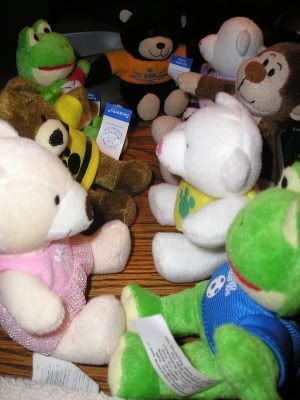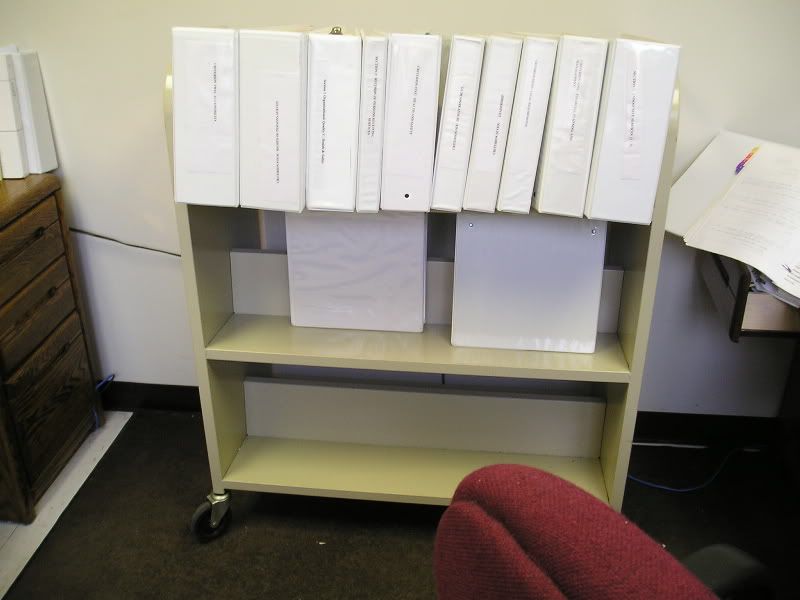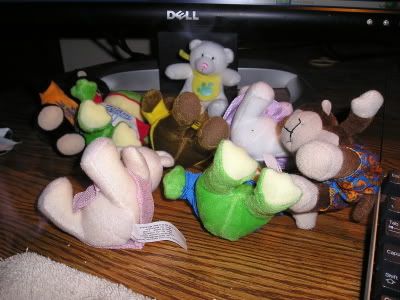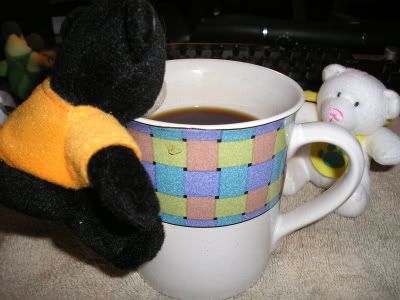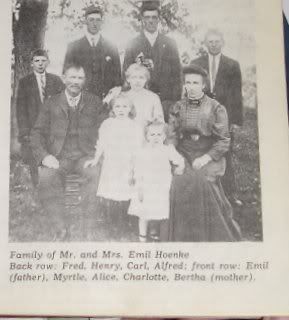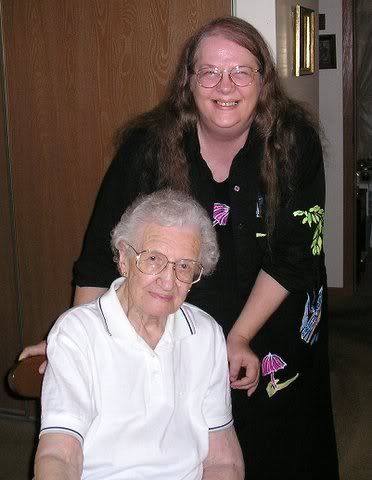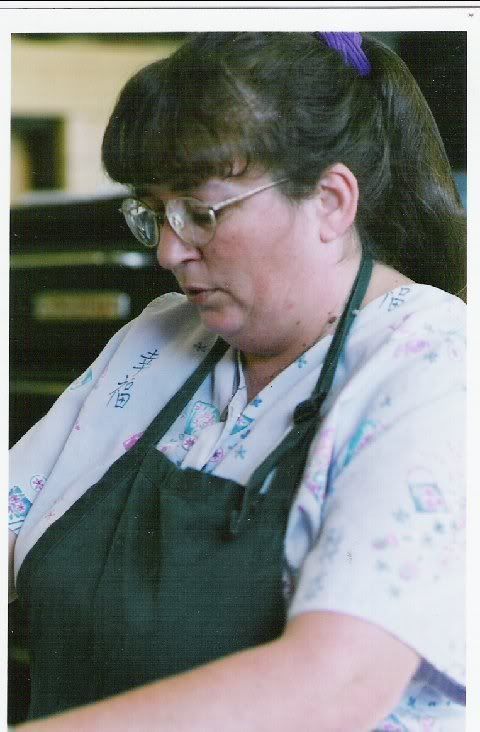Long Not So Prosporous Day

I suppose it would be natural if they grouped up … I just hope that no one gets left out. Girls and guys naturally separate at their ages. I’m not so sure I like them gossiping about last night. None of their business really. Hmpf!
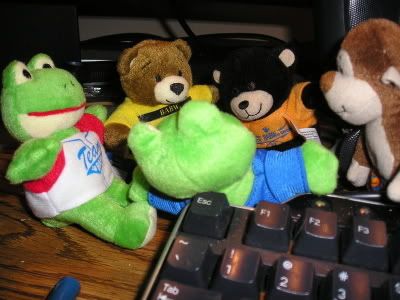
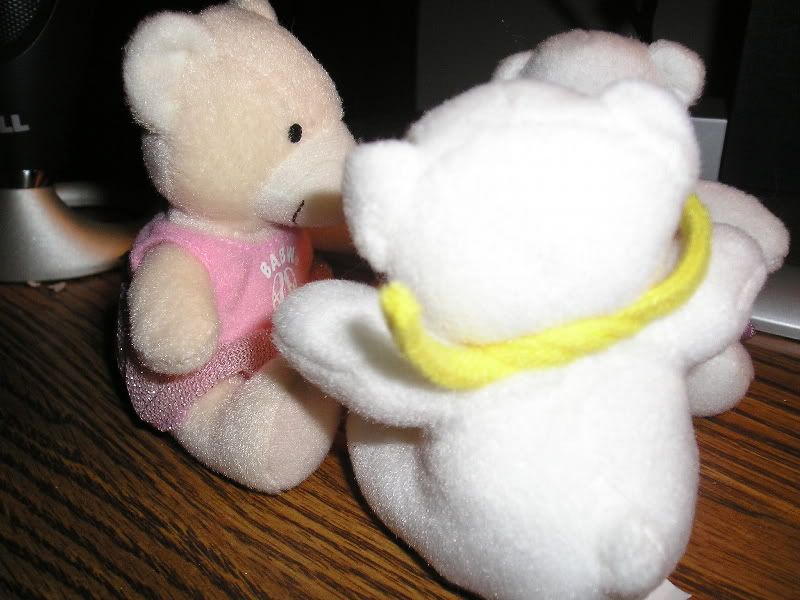
Ok, ok … I’m just going to ignore that for a little bit …But, you know we’re going to come back to it! Too much chit-chatting around here!
We were up kinda late last night … and we slept in until about 6:30? Well, maybe more around 7 am. We got the cold shoulder from V. HMPF! I think he was pretty suggestive about the time folks should wake up in the morning. Well no he didn’t say that exactly, but something like that! We’re not going to let our new friends talk to V. too GOSSIPY. They are a little fraid of older people anyway. They said that … I overheard. Unless, of course, you are an older person with a slurpee!!! Then you are all good to go! Hehhehe
We were working on our paper a little earlier … just a start really. We were hungry, but realized that about now AND with the extra folks in the house that we have to do the dishwasher more. SHEESH like bottom-less pits they are! So far I know I’ve got one that likes to cause trouble … he’s sorta like a ring leader. I think the two frogs are closer to hanging out with the older two girls, but I’m not sure if the other girl was just tired, or maybe there’s something up there because she didn’t go out with the gang last night. Maybe she is just too young. When the others go out the brown and black bear take turns in sitting with her.
The real leader is the girl bear in the purple dress. You can’t see her so well behind the others this morning. She doesn’t have any crush on any of the guys, but I think her best friend is the black bear. He’s pretty smart too. I can barely tell the frogs apart. They are twins. It’s lucky we got different color clothes to identify them. The brown bear … he’s like the cohesive one … likes everyone to be well cared for … kind of then a taker carererer bear. The white bear with the pink dress … she’s probably the most talented in the group. She likes to dance. And, the other white bear … she’s a little naïve. You have to be careful what you say around her so she doesn’t get upset or confused.
Well that’s my first psychological report on the new family members. I think its pretty important to be in charge of them. Cuz maybe someday I will be a psychologist like all the rest. But, I know that I am already important now! *giggle* Ok … you can go back to the others now … bye! Dr. Casie signing off J

Hmm… ok … I see how this is going to go. Well, I suppose nobody will get hurt … It’s not exactly like brain surgery! Good girl!
Well, it’s about 8:20 now … think we’ll pour ourselves the second coffee and see how we can progress the day. We’re on alert because there are only about 8 smokes left. We’re smoking up a storm. Oh ya … and we just remembered to plug everything in. Well at least the PDA and camera batteries. So, we’re a little grounded in that direction. There has been a nice soft rain going on in the background so a little overcast. The air is off and we’re feeling a little New Orle-an. V said that his son and Anna looked through the book last night cuz we gave them a copy too. They said it was beautiful! I think they liked the pictures of Lucky too. Kinda hard to tell because V was a little grumbly this morning. I think he’ll feel better after breakfast and a nap. *Sigh*
Ok, what else. We took our medicine … oh yah the coffee brb.
Oh man oh man! We forgot … our friend left a half sandwich in the fridge WOOHOO! See … he’s thinking about us even when he’s not here! We don’t expect to hear from our friend too soon … he has to get into that guy groove. He would have been fishing yesterday and by now might be finishing up a big breakfast or maybe he’s gone out already …. I think the schedules are a little more relaxed up there, but he says things happening all the time like he has to fish and eat and sleep and fish and fish … well you sorta see how that works out hehhehe. Yup, yup, yup he’s a doer alright!
Only other big news is that we got to talk to Deb last night … I think it’s a good idea to work Deb talks into the schedule … she’s so practical … guys I realize don’t talk about the same thing as girls. God Bless Deb for that!!!!! I’m feeling a little more normal now after having talked to her :*big beaming smile*
Soooooo … I suppose we’re all storied out. The gang is back together so that makes us feel a little better. I heard they were going to plan out the day … maybe go down to Chicago. I think they are a little young, but there’s always safety in numbers. They said they were going to catch a metra train. I suppose they’ll have to catch a cab. They’re really lucky because they get in and out of things all the time without paying cuz they’re so small. Eh, I’ll leave them to their planning … they’re a pretty smart group. They hung out with our friend for months so really got a layout of the land. He drives around A LOT!!!!
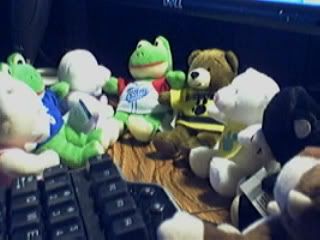
Ok … getting back now … I have to think of paper. Whoops stuff froze up have to reopen brb. Oh dear … real time is 9:48 … I knew something was wrong when I realized how long it had been 8:20 am.
Ok. As far as the paper now … we would like to narrow the scope a bit … bring her out for a test drive to see how she’s working. We tried earlier this morning, but couldn’t pull it together. Doesn’t mean we’re off … just that we weren’t thinking cohesively enough while still on the first cup of coffee. Been listening again to Dr. M. video … Maybe it be nice to put on some Sarah Brightman music … I like her soft voice. I also realized that it’s getting a little more difficult to hold on with out Dr. M. But, this week we’ll see him. We haven’t thought thoughts in that concern much lately. But, we want to hold our thoughts this morning toward the paper. This week will be a full working week, but the week over we’ll have a couple of days off on the 3rd and 4th … be nice to really nail her by then. Have a little time off between courses.
So, really really focusing … what is the first thing. Hmm… two extra docs up. First the next paper that we’re going to be going through. We’re up to Hess for the H’s. Things right now are in alphabetical order. Yup, we’re like that. I think that last night we were working through condensing some of the sections. For example, “special needs, women, and workers” might get limited to a paragraph or two total. Likewise, there should be less focuss on the program sections for business and health care. Maybe another one or two paragraphs. Like to concentrate more on the education factors and leave those areas as similar to a case in point, maybe write out how there are problems in each of the fields because of needs unmet. The other sections like tests/measurements, publications and implications were never meant to be big categories. I think the goal is to narrow this paper down to 25 pages for the actual paper. So that means … let’s frame this out backward.
2 pages Implications
.5 pages Publications
2 page Tests and Measurements
1 page Business, Health Care, and special populations (special needs, women, workers)
Education
Traditional learners (infants, pre-school, elementary, adolescents, college, doctoral)
Self-regulation
Problem-solving
Thoughts (metacognition)
Feelings
Behavior (social)
Physiology
Hmm, 12 areas in total … taking each age category as a group. And, we’ve used up 5.5 pages. So, that means about 1.5 pages for each of the above. Hmm, that helps to scale things down. 5 smokes dears!
Ok … next … I can handle this so far … and we don’t really have to cut out, just narrow. … I think we’re going to have to either go forward on the next paper, or try to take it down a little more. Oh that’s right … we were trying to summarize using the one note program. Let’s pull that up now. How’s she looking?
Hmm, ok narrowed down the first 5 intro statements on self-regulation and problem-solving … so far we got three model programs and two strategies. What do the programs have in common? Hmm, well first obvious conclusion is that they each tested a given program hoping to optimize some kind of piece of educational performance. They used high-literacy learning, update skills and adapt behavior to new organizational realities, and in solving math problems. So, the common denominator is reading, business skills, and math (logic). We could just as well say improvement tasks. Ok, next … let’s look at the problem-solving strategies. The effect of self-explanation and self-regulation training (knowledge acquisition) on performance tasks of learning and problem solving. And, the theory that evolving interactive-transactive stance affects self-perception, perception of environment, so ability to adapt to learning in context and building of an identity … like the identity I am now gaining in being a student. We could at this point say that self-regulation allows the ability to problem-solve (perform tasks, or learning). It seems at this point that the tasks are irrelevant. The tools then so far are self-explanation (get definition), self-regulation training, taking the stance of interactive-transactive ), which evolves). Need to get two terms down.
AHA … very good had to go back to the resource, but self-explanation and self-regulations here means focus on “how learners explain instructional materials to themselves and how they monitor their study activities and states of comprehension. Let’s go get now interactive-transactive … ahh … that helps V’s back the tricky word, transactive is active “across” that makes more sense now.
Ok, side-tracked there … not with V. but with Evensen … he’s the one that wrote the medical students paper on stance. Still haven’t read the full paper, but I read a little more and more each time and just love it. I want to be this smart some day! Let’s see if I can capture a nuance to all that I just glanced at.
Cool, cool now have to break that down … oh one more cool term I want to catch here … there is such a thing as “think-alouds,” which is a good thing in learning. I liked that idea right away … I think it is what I do when I’m sitting here at the computer with you. Forces me to think and summarize.
Ok, one more thing before we go out for smokes. I want to take that big bad paragraph down to my size … what exactly does it mean?
Community à cues (focus on all that happens) = learning task = [Sequence (environmental experience = observation + Tao of emulation + self-control)] = self-regulation = new learning (from models + process) = new pathways = [Set goals = framework (interpretation + experience (achievement setting))] = [approach = (requirements + take stock) = opportunities (approach/avoidance- Dr. M.) learner identity] = [cycle (forethought + execution-monitor (volition) + evaluation) = negotiation process (not avoidance + self-protection) = [self reflect (Interactive system = initiative + responsibility) = learning (establishment of goals + goal criteria] = [adapt (constraints/affordances + environment (not = held in mind (too expansive)) = learning identity (language + concepts) Community]
Ok, better … one more time now … one smoke left. YEEKS. Ok, we did this next part after we got back and through the process of calming down from our crisis. Another one other than smokes. Please note this entire next paragraph is paraphrased and parsed together from a variety of statements read from Evensen (2001) in an order and format that assisted us to understand what we could.
Disposition toward learning: The processes of
metacognition, motivation, and behavior
When we focus on all that is happening in our environment, we can note that the community is giving us cues and these cues are our learning tasks. The sequence of learning from environmental experience is to 1) observe, 2) emulate, and 3) self-control. We interact with the environment by self-reflection and through taking initiative and responsibility. Because the environment is so expansive, we don’t stay within our minds. Time and space is negotiated interactively. We establish ourselves by interpreting our experience and framing/setting achievement goals. This is a forward approach that takes stock of performance requirements of experience. The learning tasks are our opportunities to progress. To go forward, we must approach challenges and avoid regression. We cannot reach our performance goals if we avoid, or are overly self-protective. Learning occurs within the establishment of goals and in the adaptation to the constraints and affordances of our new environment. The learner gains his or her identity from the learning cycle, which includes 1) forethought, 2) execution/monitoring (volition), and 3) evaluation. In accepting the identity of a learner in any given environment we are awarded the language and concepts of that community. Self-regulation accepts new learning and pathways from models and from the processes of self-regulation. Dr. Marvin is our role model because he most often does what seems exactly right.
Evensen, D. H. Salisbury-Glennon, J. D., Glenn, J. (2001, December). A qualitative study of six medical students in a problem-based curriculum: Toward a situated model of self-regulation (Electronic ed.). Journal of Educational psychology, 93(4), 659-676.
Ok ok … spent much too long here … I’m not sure why this was so important to me. I’m afraid I may have avoided the harder more defined tasks of the paper. But, I believe this is going to be instrumental to the work. Perhaps it will assist me in framing what I have to do next.
One slight pause here … My second crisis was that on the way out to get the smokes, I figure that I would please our friend considerably if I took down the garbage he missed before he left. He had said, “If you fill them, I will take them down.” So, thinking how happy he would be, I took off the cover and reached out to slip the bag off the frame. About the same time I saw them, I felt them on the hand holding the lid. Obviously I dropped the damn thing and had near a fit … Well. V. might suggest it was pretty much more than a near fit. We had washed our hands and went to the computer, cuz we were regressed about 12 steps. V., of course, is always calm. AND, the end result is that we through away the entire garbage – container and all. The dishes were clean from this morning and we cleaned everything including sweeping the floors and swiffering. Actually, we’re not quite done swiffering, but we got done first the area in question. V supplemented our knowledge from where our friend left off.
Unfortunately, there was a lot of mental damage done. It’s 5:18 now and very little has been done over the last 5 hours, because we’ve been processing what we had to do from the incident and its affect on our minds. Somewhere in here the difference between where we were in working with that paragraph and the other is pretty big. I have to figure out now where we’re going to go next, but it doesn’t seem too far off from where we were last. We’re more calmed down though and I have to admit though the floor is a huge challenge on our back … slowly, we’re doing it.
Well, it’s a bit later now … we finished the floor, did school stuff, ate, took a shower, and am now eating a slurpee (lemonade!) We talked to our Grandma for a little bit, but she had another long distant call, so I gave up the line. The rule is tonight when the slurpee is gone we have to go to bed. The animals got back late … they said they had already had Italian for dinner. They said they went down to the lakefront and even got a ferris wheel ride on Navy Pier. They seem kind of tuckered out. They have to make sure they don’t get trampled on. They’re just talking between themselves now.
PICTURE TIME!

Whoops, that’s an earlier picture. We thought it might excite our friend a little if he knew we really, really did dishes all by ourselves!

This is of course, the guys they are a little overexcited … the frog in the background is listening to black bear tell purple dress bear about how he was only too happy to treat her to cotton candy. Brown bear is telling the wild monkey that he wished he could have stayed longer to play some pick-up basketball or something, but I guess there wasn’t enough time. Little bib white bear is wondering why nobody has remembered it is here bed time. Off-white bear in pink dress is talking about one of those guys that sell newspapers for donations to bed street people. She might be a little confused in her facts. She seems to think they are sleeping in hotels. I guess our friend talked to them about hotels when we were gone. They didn’t understand what the “hold-up” was. ‘spose I should leave them to their own devises … wait, one more thing. I’m going to nudge brown bear and see if baby bib bear shouldn’t be put down. Ahh … that broke things up a bit … she’s down now J … all happy
I think they are going to read a while. Black bear is in the middle of a book. Didn’t catch the title, but he’s the best reader so he’s telling the story to the others. Cool, hmm?? Oh except white bear with the purple dress withdrew early she said she was going to take a shower before going to bed. That’s smart thinking cuz she avoid the crowd in the morning. Oh one more thing wild monkey said he was going to catch a soccer rerun. YEEKS! Another soccer fan? Think we’re going to turn the music over to Enya … need something soft and pretty. Relaxing….
I think we’re going to write an email to our friend. ‘Cept now Chief is starting to get a little bossy … wants me to move my slurpee so he can have his tummy scratch. But, sometimes, we’re not in the mood, do you know what I mean? He’s like it a lot and so has Missy since we put the towel up on the keyboard. It’s softer on them and softer on our elbows. Shoot … he always gets his way … but not so excited that he just took down Miss and is playing with the camera cord … Oh pictures, I forgot.
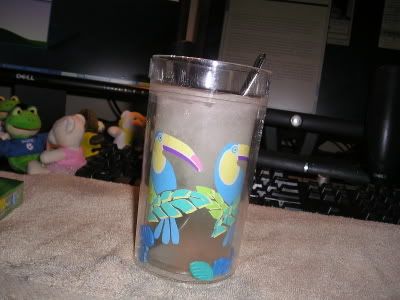
There is that delicious you know what. By now your probably thinking … Wow she’s got her own slupee glass. Well, we hate to brag, but it is true. It’s double insulated. It’s pretty old … goes back to the days we owned a house and the boys were living with us. That’s almost 10 years now … Not quite, but a long time ago.
Ok, let’s look into Sweetie Pie stuff. Oh Cool!! I caught Chief looking … look at this

Pretty cool! And, one last past agenda item … for the record this is the bottle of the really cool stuff.

Oh no … Chief thinks he might like a drink … shoot he’s being a real trouble maker … we just had a rousing game of pen. He’s laying down again … My kitties aren’t real players. They say a lot … isn’t that a little silly?
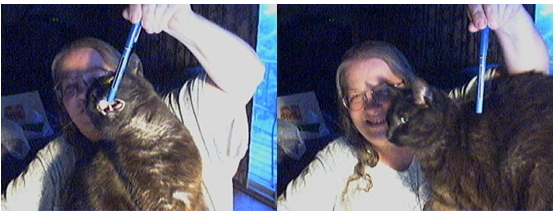
Awe … we gave him a nice long pet … then went to brush our hair out … Do you want to know what he thinks of brush game??
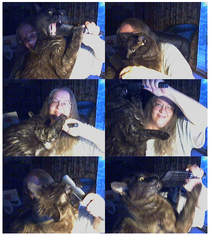
Ok, ok … that’s enough excitement for one night. Think we’re going to post and scoot off to bed. Didn’t get a chance to play with Sweetie though. Maybe we could stay up just a little bit? OKOK BUT just a LITTLE!
Umm, this one is ok to read ... don't read post before this one!
Hi! We’re taking a break. We’ve studied through for about six hours and just took off this last 20 minutes to talk to our Grandmother. I had thought right, these last couple of days she’d been in the hospital. She had help lowering her blood pressure, because her blood level was low, so it was making the heart work too hard. She went in on Thursday afternoon and she got back today about noon. My mother and her husband had come down and they helped her to be taking care, but they were just leaving about 5 when I called. They used that opportunity to slip out the door. It is still about 3 ½ hours back to their place.
We didn’t talk too long, because she had food out from what was brought to her and I knew she wanted to get the watermelon, strawberries, and cantaloupe into the fridge. She’s so organized that she will cut up the watermelon, strain it and get it into individualized containers, so it stays fresher longer. God only help me that when I get to 47, I will be able to do what my grandmother does at over twice my age. Standards are changing … she raises the bar.
We talked mostly about what she had experienced over the last couple of days. She says she feel stronger than before, but still not up to par. Her numbers are supposed to be at 16, she was down to 9 and now back to 11. I couldn’t be more specific exactly what the numbers are measuring. Just know their relationship. She said the last time she had been in they had given her twice as much blood, but this time they wanted to see if she could build it up herself. That worked us into a general discussion of doing things on your own. I can tell when people start pressuring her to do stuff she doesn’t want to do. People are worried about her, so my uncle wants her to come up to their WI cabin on the lake for awhile. But, my Grandmother is pretty determined to stay close to home. She is much more comfortable knowing someone here can be taking care of her if need be and while at her apartment … she treasures being able to take care of her as need be. She says after you’ve been on your own for so long, you know how you like it to be. We know exactly what that’s like. As much as I love my friend, he’d sure interfere in my life if he was here all the time. We’d have to start building new rules from square #1. If he suddenly dropped into my life that way, we’re pretty sure we’d bother each other to pieces. He’s a moving around person, and I’m very much not!
Hehehe we’d have to do as now … yes dear … Go fishing … great idea … see you later!
My Grandma and us, as they say, see eye to eye. I think we might give her another call tomorrow night … see how that goes. Hehehe … we will want to tell her we’re finally up to the last paper … She’ll probably tell me what a good idea it is to get things taken care of. She’s like that.
Hmm, this is a pretty long time away from the paper … I’m kinda thinking that my fingers might feel better if I held some ice for a while. Feeling kinda sore today. Hmm 5:45 … guess that means I should eat and take medicine. No V. to tell me what to do. HMPF! He’s off on a special treat with his son though … so we won’t spoil that thought. Maybe he’ll even tell people about it … its kinda cool!
One more thing we did which kinda through us off track. We uploaded a paper and sent it to our oldest son with a brief note. My guess is that he’s going to think we’re nutty thinking he is going to read a “official” paper … especially when he notes its about 20 pages long. BUT, it was a very good paper. It talked about children his kids ages and discipline and teaching. I think everyone should read up where kids are concerned.
Hmm … ok … what to eat. Not really in the mood for a frozen dinner. Maybe something lighter. Too much red licorice today. Ugh. Hmm, we have cantelope in there … maybe I’ll try that and then make a slushie later on. Sweetie pie surprised us with both! Well, at least the lemonade and orange juice to go with the ice. Ahhh … such a dear heart! Probably a good idea to stop sipping on coffee too. Ok, so we’ve got a plan … Now. Should we take seriously the challenge to ice down our hands? Haven’t had to do something like that before. BUT, I still want to be using them. Hmm, we’ll do the rest first and see if the medicine helps the ache go away. I take a couple of things for arthritis and I think that might help our hands. Ok, brb.
Ahh that’s better … ok 6 pm … half an hour til the pain stuff kicks in …
I’ve gone all day without air, but I think I’m going to fix that too. We get the late day sun in here. Oh man shoot shoot … D#()&%$# … I forgot to do TWO things. Today was the center’s family picnic AND I didn’t get those last books in the mail. Oh shoot, where’s my mind?? Lordy, I suppose cantaloupe will do that to a person … must kick back into the memory center. I’m going to hear about it for a year that I missed two family picnics! Hmm, last year we we’re studying too. I told clients though that I would be there today. Shoot. I know the one that will hit me at the door complaining, “Where were you, we missed you.” Then that will get repeated over and over again. Shoot, shoot, shoot. I knew it was an iffy proposition as to whether we’d go, but we figured we’d be more committed to it if we let people know we were PROBABLY going to come. Went as far as asked the clients where and when. You know where I probably did my most veering was in writing that on one of the surveys one of the parents stated her daughter did not like picnics because of the bugs or weather. I have to admit … I strongly agree with her! Please don’t ever tell my old girl scout leader. She’d say, ANNNNNN and give me one of those imploring looks. Nope, maybe it worked as a kid … we were a lot more tolerant then … But, like my Grandma … I’d just as soon stay home where I’m comfortable. I pretty much ignore the weather and eating too many things with bugs. Ok, ok … shhhh, it’s ok girls, let it go… let it go… HMPF that’s probably why we forgot … have a team in their working against us going! I guess there’s a limit to just how nice Ms Ann really is … *sigh* Shhh, shhh … be nice.
Umm, we got something else to talk about, but just a little ok … my guilt is now going to eat me up. We ummm, did something unschool like yesterday … we ummm registered at iFriends. Ok, that is something just a little bad, k? Dr. M. says that things aren’t always black and white, so things aren’t always JUST either or good and bad. And, our friend would say if we were thinking “bad” then we might have regressed a little. Umm, I think that just happened. Oh dear … now what do I do?? I know, I know for one I gotta finish the cantaloupe … just its not my favorite food. Shhhh, I know, I know…
New paragraph. Well, I’m not saying anything more about iFriends, cuz I don’t want to spoil it. BUT, if I were going to say anything, it would probably be like it’s ok to relax some at the end of a night. V’s not so sure we need to do school after 6 pm. But, he might be thinking it’s a good idea. He surely won’t like the other idea. But, we can do what we like to do, right? Hmm, both Deb and T are on-line … Better not bother either of them yet … still too early. T’s better in the morning to talk to and Deb about 8:30 pm. Hehehehe, at least by then theres a smallllllllllll chance she’s eaten! Never did see such a late eatererer … she’s even later than V and we think HE waits a long time for dinner. Eating, eating … mumble, mumble.
Ok, there … about cleared the theoretical table … Hmm, what are we going to tell V. beside at least one of us has a big mouth! SHHHHH be nice! I think we need to appreciate this situation from an artistic point of view. Yes, that’s our story and we’re sticking to it!
I think the important part is that we follow THE plan … This paper HAS to get written in 2 weeks time. We need to budget the tasks. We know from studying that the really good thinkers plan out what they are going to do, and then they self evaluate. That’s what we’re doing right now. Ok, we’re about a quarter of the way through with our present task. This maybe taking longer than we’d hoped. Hmm, that’s not good … It is taking us about 51 minutes to review what we’re reviewing. Problem is that while we’re reviewing we’re reading into each of the articles. We hadn’t originally planned to do all that. Hmm, pro’s and con’s … time is passing by. Con. Pro … we are getting insights as to what’s in front of us. Con … we’re still not being able to hold together all the information we are reading. Pro … We ARE understanding what is getting read and each thing makes sense. The task of the paper is to break it down ANALYZE, then build it back up through synthesis toward the end. If we’re going to go fully with Bloom here … Knowledge was when we went out and gathered all the resources. We narrowed it down to 26. Now we are in the comprehension phase. We are trying to figure out the significance of each … how it ties together. It’s a little tricky because everyone approaches self-regulation and problem-solving a little different. But, we’re finding out that the structure of our outline is working well. I’m a little frustrated knowing that we’re not going to be able to read through complete articles. That would be a waste of our time right now. That kind of understanding will have to wait until our masters or doctorate paper.
See V. we’re trying!
The plan we’ve been following today is to first transfer files from PDF to Word … that takes about 5 minutes. The next thing is to note the author and title one at a time, and then list the conclusion of the studies from the last part of the abstract. This works most the time, but sometimes the authors are not good psychologists and hide the final conclusion. We ran into one dumb person today that didn’t even bother to pull her study together. She basically said umm, look at the chart 2nd column and you’ll see what I mean. D_(*Q%$ if I had the time to figure out charts, I would be writing my Doctorate! The article written about the doctor interns was the best. They said, clearly … Three things can be concluded from this study. They are … 1) …. 2) …. 3) … The end. Pswhoo clean! At this first stage, we divide the material into one of six categories. We lump it either in 1) self-regulation, 2) problem-solving, 3) thinking (metacognition), 4) affective (feelings), 5) behavior (social), and 6) physiological. We figure this to be more of the theory building portion of the paper.
The next step is to list by areas of subjects being tested the abstract and who and a little of what is going to be tested. This is broken down into sub-categories of pretty much age … like pre-schoolers, elementary, middle school, all the way up to doctorate. And, we through in a few more categories of special needs (developmentally disabled), women and workers. HA! Sure like that grouping … Kind of like all the “important people!” Next is to conclude the results of the test … here we usually go to the results or discussion area and try to find a paragraph or two that best sums things up. This is the area of the report were calling “programs.” And it is divided into education, business, and health. This is because the studies vary in the application. The good majority of articles we’ve chosen are toward education, but we find a certain appreciation that if you haven’t learn to self-regulate through each of those corresponding years, you might be facing the problems when you are finally educated and are out in the world either working or taking care of yourself.
The tests and measurement section is very brief … I’ve listed here primarily what kind of a study the article represents, such as empirical, case study, modeling, or literature review, etc. AND, during this section, I list out the keywords. I figure this is so towards about three pages from the end of the paper, I can be tying more succinctly how all the apples and oranges fall into place. There are a lot of key categories in this paper such as strategy, goals, motivation, curriculum etc. Not way too many, but there will be a handful by the time we’re up to that point.
The next part is another very short part … it will surmount to maybe ½ to ¾ of a page. During this part … I just to make a note of the different fields that are studying self-regulation. I do this through summarizing the publications where my articles are coming from. So far the ones represented in the first 7 studies are psychology, of course, and then cognition, education, programs, and that’s about it. Pretty narrowed down. When I’m finished, I will be able to note if any few journals stand out in their contributions. Such as one thing we’ll note is that many of my studies so far fall under the publication classification 3530, or “Curriculum & Programs & Teaching Methods.” That serves our purpose just fine.
There is only two sections left and they are not getting any attention right now at all. They are the two sub-categories of my big papers last two pages. One is the Implications of the work on cognitive psychology, and the other is the Implications of the work on me the learner. According to Bloom this would be the last section on evaluation.
Hmm, better check this out …
First 6 categories … knowledge
Traditional Learners (by educational/age level) from abstract … comprehension
Who was involved and the purposes of they study … application
Programs (education, business, self-care) what were the conclusions of the studies … what did they prove … analysis
Using tests and measurements and publications – restructure the findings by tiding up the sum total of what was discovered by the analysis and lead into the next direction of studies, basically … synthesize
And last, the two implication between the field of psychology and myself will be the evaluation portion of the work.
Wooo HOOO we did it. *sigh* have to go over our work now to see if it makes sense all held together. Might make a change or two in our outline format to be more succinct.
First though … I am not going to finish that cantaloupe, please take it away!
I know … I know … SLURPEE!!!!!!! Oh man … it’s happening! The time now 7:18. I think, I would rather continue the paper during the early hours of the morning. Then to worry too much about it here. Better to try and relax now eat slurpees, and perhaps just read a bit. That would make us feel better. Maybe a goal of bed by 9 pm. Hmm, now we’re having a discussion … to major cards out on the table. Either we do as just stated and read for a bit, or we go play in no-man’s land. Hmm. Compromise?? Ahhh, by now you know all the best ideas compromise! Take stock and reevaluate … Hehehhe that’s self-regulation talk happening. How ‘bout we post … read once, then go play 40 minutes and one hour, or one hour and 40 minutes. Deal?? GOOOD GOOOD … Be right over here -------

We’re doing it!
Ohhh one more thing. Because we like to see our work in format … and it helps us to reformulate our thinking, we’re going to post the notes we’ve been working on … this is a long 15 pages that I can be PRETTY DARN sure, you are not going to want to read. SOOOO, please just forget about the post called … “DON’T READ THIS … SUBSEQUENTLY, WHOOPS OUR SLIP IS SHOWING!”
Hehehehe … sorry, sorry … it’s the slurpee talking!
OH MAN OH MAN!!! Did someone neglect to remember the house is now full of party animals?????
Lordy!
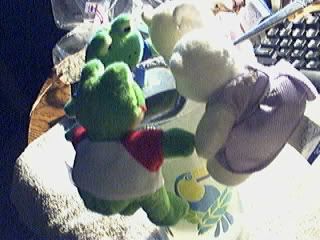
Final – Project Option A (just a working notes draft)
The effect of self-regulation and problem solving on learning performance
Introduction
Self-regulation
(1) De Corte, 2004 The CLIA-model: A Framework for Designing Powerful Learning Environments for Thinking and Problem-solving. Both studies were carried out in parallel with the development of the framework, and were instrumental in identifying and specifying the different components of the model. They yielded both promising initial support for the model by showing that CLIA-based learning environments are indeed powerful in facilitating in students the acquisition of high-literacy learning results, especially the acquisition and transfer of self-regulation skills for learning and problem solving.
(1) DeShon, 2005 A Motivated Action Theory Account of Goal Orientation. A dynamic self-regulation model of goal orientation, termed motivated action theory, is presented to integrate the various conceptual perspectives and to provide guidelines for future goal orientation research.
(1) Fuchs, 2003 Enhancing Third-Grade Students’ mathematical problem Solving with Self-regulated learning Strategies. Self-regulated learning (SRL) incorporated goal setting and self-evaluation. SRL positively affected performance.
Problem solving
(1) Bielaczyc, 1995 Self-Regulation Strategies: Investigating the Effects of Knowledge Acquisition Activities on Problem Solving. Increased strategy application was accompanied by significantly greater performance gains. The results indicate that the particular self-explanation and self-regulation strategies used in training contribute to learning and problem-solving performance.
(1) Evensen, 2001 A Qualitative Study of Six Medical Students in a Problem-based Curriculum; Toward a Situated model of Self-Regulation. The study, using a situated research strategy, resulted in a grounded theory built around the central phenomenon of stance. In short, learners illustrated different types of stances-proactive, reactive, retroactive, interactive, and transac¬tive-that served to govern their perceptions of themselves and the environment, their selection of goals, and their adoption of learning strategies. Furthermore, recursive patterns of stances were longitudinally described as either evolving or shifting. Findings indicated that more successful students demonstrate an evolving, interactive-transactive stance that affected the ways they participated in the learning environ¬ment and the professional identities they were beginning to develop.
Thoughts (Metacognition)
(1) Cleary, 2004 Self-Regulation Empowerment Program: A School-Based Program to Enhance Self-regulated and Self-motivated Cycles of Student Learning. In sum, as students make the transition to middle school, many of them develop negative self¬-motivational beliefs and struggle to deal with the academic demands for greater self-management. The key issue addressed in this article is how middle-school students can be empowered to exert greater control over their learning so that they become more proactive, self-motivated learners.
(2) Fuchs, 2003 Enhancing Third-Grade Students’ mathematical problem Solving with Self-regulated learning Strategies. Problem-solving transfer instruction taught problem–solution methods, the meaning of transfer, and 4 superficial-problem features that change a problem without altering its type or solution; it also prompted metacognitive awareness to transfer. The authors contrasted the effectiveness of transfer plus SRL to the transfer treatment alone and to teacher-designed instruction.
Feelings
Behavior (social)
(1) Ewart, 1991 Social Action Theory for a Public Health Psychology. Social action theory clarifies relationships between social and personal empowerment and helps explain stages of self-change.
(1) Goodman, 1994 Preschool children’s Use of Speech During phases in Task Completion. Results were analyzed by puzzle phases (begin¬ning, middle, end). Two verbal categories-verbalizations of plans or thoughts and questions and answers to self-were overly represented in the beginning and middle phases, which is also where the failed acts were concentrated. The patterns of co¬occurrences and one-step sequences also showed a relationship between task-relevant speech (social and private) and failures or successes requiring trial and error. That relationship appeared primarily at the beginning and middle phases, with nearly an opposite pattern at the end. Results are taken as support for the indication of verbal self-regulation functioning within a task.
Physiological
Traditional Learners
Infants
Pre-school
(2) Goodman, 1994 Preschool children’s Use of Speech During phases in Task Completion. Abstract: Analyzed the integration of speech and motoric behaviors
emitted by 38 3½-5 yr olds during phases in the process of solving 6
jigsaw puzzles. Ss' activities during puzzle solving were videotaped;
speech was transcribed; speech and nonverbal behavior were unitized and
categorized; and the occurrence, category, and duration of each act was
noted, using an event recorder. Data were analyzed by puzzle phases
(beginning, middle, end). Two verbal categories (verbalizations of plans
or thoughts and questions and answers to self) were overly represented
in the beginning and middle phases, which was also where the failed acts
were concentrated. The patterns of co-occurrences and 1-step sequences
also showed a relationship between task-relevant speech (social and
private) and failures or successes requiring trial and error. That
relationship appeared primarily at the beginning and middle phases, with
nearly an opposite pattern at the end. Results are taken as support for
the indication of verbal self-regulation functioning within a task.
Goodman, continued). The data consisted of the videotaped verbal and nonverbal behavior engaged in by 38 preschool-age children (ages 3'h to 5 years) while completing a series of six age-appropriate jigsaw puzzles. Each child was individually ob¬served in the presence of a familiar adult. Following the videotaped ses¬sion, speech was transcribed; speech and nonverbalbehavior were unitized and categorized; and the occurrence, category, and duration of each verbal and nonverbal act were noted on an event recorder. Previous research (2, 3) provided the schemes for categorizing the ver¬bal and nonverbal behavior. Two categories of social speech and six categories of private speech adequately described the data. Social speech, speech directed to the examiner, included task-relevant and task-irrelevant social speech. Private speech was classified as follows: (a) verbalizations of plans or thoughts (task-relevant, an analysis of the situation, a reason for action or inaction, a plan, or a self-instruction); (b) questions and answers to self (a plan, self-instruction, or analysis of the situation phrased as a question); (c) description of activity (task-relevant labeling of current or im¬mediately prior activity or content of the puzzle); (d) wordplay (singing, humming, or word repetition); (e) comments to absent or nonhuman others (the content suggests that the phrase is spoken "as if" to an audience or to an object); (f) emotional expletives (positive or negative feeling about the task).. It should be noted that two-thirds of the speech occurred in three of the eight verbal categories: task-relevant social speech (24% of the speech), verbalizations of plans or thoughts (24%), and questions and answers to self (19%). Each other category occurred less than 15% of the time. Inter¬rater reliability, with agreement calculated separately for each category, was .91 overall. Puzzle-solving performance was unitized according to when a child picked up a puzzle piece and then placed it on the board or returned it to the table. Puzzle-solving acts were categorized as follows: (a) immediately suc¬cessful placement (placed correctly with little or no hesitation); (b) success following spatial reorientation (spatial readjustment of the piece prior to correct placement); (c) success following trial and error (one or more unsuc¬cessful attempts prior to correct placement); (d) failure, due to placement error (placed in wrong slot); (e) failure, piece returned to table (following unsuccessful attempt to place piece, child returns piece to table), and (f) no motor behavior (child pauses between acts). An interrater agreement of 96.1076 was achieved. Each puzzle trial was equally divided into thirds, representing begin¬ning, middle, and end phases of puzzle solving. All data were summarized across the six trials.
Elementary 3-5, 6-12
(2) De Corte, 2004 The CLIA-model: A Framework for Designing Powerful Learning Environments for Thinking and Problem-solving. Abstract: A major challenge for education and educational research is to build on our present understanding of learning for designing environments for education that are conducive to fostering in students self-regulatory and cooperative learning skills, transferable knowledge, and a disposition toward competent thinking and problem solving. Taking into account inquiry-based knowledge on learning and recent instructional research, this article presents the CLIA-model (Competence, Learning, Intervention, Assessment) as a framework for the design of learning environments aimed to be powerful in eliciting in students learning processes that facilitate the acquisition of
productive knowledge and competent learning and thinking skills. Next,
two intervention studies are described that embody major components of
this framework, one focusing on mathematical problem solving in primary
school, and a second one relating to self-regulatory skills in
university freshmen. Both studies were carried out in parallel with the
development of the framework, and were instrumental in identifying and
specifying the different components of the model. They yielded both
promising initial support for the model by showing that CLIA-based
learning environments are indeed powerful in facilitating in students
the acquisition of high-literacy learning results, especially the
acquisition and transfer of self-regulation skills for learning and
problem solving.
De Corte, continued). The learning environment in the classroom was fundamentally changed, and its design, implementation, and evaluation were done in close cooperation with the teachers of the four participating experimental classrooms and their principals. The intervention consisted of a series of 20 lessons taught by the regular classroom teachers (for a detailed report about this study see Verschaffel, De Corte, Lasure, Van Vaerenbergh, Bogaerts, & Ratinckx, 1999). In terms of the CLIA-framework the learning environment can be described as follows.
(3) Fuchs, 2003 Enhancing Third-Grade Students’ mathematical problem Solving with Self-regulated learning Strategies. The authors assessed the contribution of self-regulated learning strategies (SRL), when combined with problem-solving transfer instruction (L. S. Fuchs et al., 2003), on 3rd-graders’ mathematical problem solving. SRL incorporated goal setting and self-evaluation. Problem-solving transfer instruction taught problem–solution methods, the meaning of transfer, and 4 superficial-problem features that change a problem without altering its type or solution; it also prompted metacognitive awareness to transfer. The authors contrasted the effectiveness of transfer plus SRL to the transfer treatment alone and to teacher-designed instruction. Twenty-four 3rd-grade teachers, with 395 students, were assigned randomly to conditions. Treatments were conducted for 16 weeks. Students were pre- and posttested on problem¬solving tests and responded to a posttreatment questionnaire tapping self-regulation processes. SRL positively affected performance.
Fuchs, continued). From six schools in a southeastern urban school district, 24 third-grade teachers volunteered to participate. Stratifying so that each condition was represented approximately equally in each school, we randomly assigned teachers to three conditions (8 per condition): control (teacher-designed instruction informed by the basal), transfer (Fuchs et al.'s, 2003, solution plus transfer, with some modifications described in the following para¬graphs), and transfer plus SRL. Teacher groups were comparable on gender, age, education, and years teaching. Students were the 395 children in these classrooms who were present for each pre- and posttest. Student groups were comparable on gender, reduced or free lunch, race, special¬education status, and English-as-a-second-language status. Also, the 395 children in the complete data set were demographically comparable with the remaining 58 pupils who were absent on one or more pre- or posttest. At the beginning of the study, on the basis of classroom observations and scores from the preceding year's district accountability testing, teachers designated children's initial mathematics achievement status as high, av¬erage, or low (i.e., HA, AA, or LA, respectively). Students were distributed across HA, AA, and LA status, respectively
Adolescents 13-17
2) Cleary, 2004 Self-Regulation Empowerment Program: A School-Based Program to Enhance Self-regulated and Self-motivated Cycles of Student Learning. Abstract: This article describes a training program, Self-Regulation Empowerment Program (SREP), that school professionals can use to empower adolescent students to engage in more positive, self-motivating cycles of learning. It is a two-part approach whereby self-regulated learning coaches (SRC) (a) use microanalytic assessment
procedures to assess students' self-regulation beliefs and study
strategies and (b) train students to use these strategies in a cyclical,
self-regulation feedback loop. Ultimately, students learn how to set
goals, select and monitor strategy effectiveness, make strategic
attributions, and adjust their goals and strategies. The program was
developed from social-cognitive theory and research and integrates many
of the essential features of the problem-solving model. Interventions
used in the SREP include graphing, cognitive modeling, cognitive
coaching, and structured practice sessions. A case study is presented to
illustrate procedures for implementing the program. Implications for
school psychologists and teachers also are presented and discussed.
Clearly, continued). A case study is presented to highlight the primary processes and tech¬niques used by an SRC when working with Anna, a 12-year-old Caucasian student. Anna partici¬pated in a mainstreamed educational program and performed well in many of her classes. However, she struggled in science and social studies due primarily to her failing test grades. A previous psychoeducational evaluation revealed that Anna was of average intellectual potential and pos¬sessed age-appropriate memory, reading comprehension, and written expression skills. However, she displayed below-average word attack skills and weak computational skills. As a result, she was provided with a variety of school-based support services (e.g., achievement center, remedial math and reading) to support her educational program. Despite these support services, Anna showed minimal improvement and was recommended to participate in the SREP. She was provided with eight 35-min sessions of individualized training with the SRC. It should be noted that the training procedures used in this case study were not based on a script or manual of specific procedures that must be followed in all situations.
Young adults (college)
2) Bielaczyc, 1995 Self-Regulation Strategies: Investigating the Effects of Knowledge Acquisition Activities on Problem Solving.
Abstract: Examined the causal nature of the relation between
particular strategies students use while studying to explain
instructional materials to themselves and student performance on
associated problem-solving tasks. A set of self-explanation and
self-regulation strategies used by 24 high-performance university
students was identified. Strategy training was used to manipulate Ss'
application of the strategies. Following introductory programming
lessons, Ss received interventions involving explicit training in the
strategies (instructional group) or a similar set of interventions with
no explicit training (control group). The instructional group showed
significantly greater gains than the control group in the use of
self-explanation and self-regulation strategies from the pre- to
postinterventions lessons. Increased strategy application was
accompanied by significantly greater performance gains.
Bielaczyc, continued). There were 24 participants in the study. The instructional group had 11 participants; the control group had 13 participants. The participants were either university students or recent graduates. No participants had prior programming experience; all had completed at least one semester of college-level calculus. The participants were recruited through campus advertisements and were paid $5.00 per hour. Five participants did not continue after the introductory session of the study: Two participants had difficulty in giving verbal protocols during the pretest, and three participants made no programming errors on Lesson 1. Of the participants completing the study, one was dropped due to a mistake in the procedure.
(3) De Corte, 2004 The CLIA-model: A Framework for Designing Powerful Learning Environments for Thinking and Problem-solving. Abstract. A major challenge for education and educational research is to build on our present understanding of learning for designing environments for education that are conducive to fostering in students self-regulatory and cooperative learning skills, transferable knowledge, and a disposition toward competent thinking and problem solving. Taking into account inquiry-based knowledge on learning and recent instructional research, this article presents the CLIA-model (Competence, Learning, Intervention, Assessment) as a framework for the design of learning environments aimed to be powerful in eliciting in students learning processes that facilitate the acquisition of productive knowledge and competent learning and thinking skills. Next, two intervention studies are described that embody major components of this framework, one focusing on mathematical problem solving in primary school, and a second one relating to self-regulatory skills in university freshmen. Both studies were carried out in parallel with the development of the framework, and were instrumental in identifying and specifying the different components of the model. They yielded both promising initial support for the model by showing that CLIA-based learning environments are indeed powerful in facilitating in students the acquisition of high-literacy learning results, especially the acquisition and transfer of self-regulation skills for learning and problem solving.
(De Corte, continued). Starting from a constructivist perspective on learning, several aspects of expertise, namely metacognitive, affective, and cognitive skills and related metaknowledge, were integrated into the real instructional context of an experimental group (E) of 47 first year students in business economics. The intervention focused on the acquisition in students of eight regulatory skills that were taught in a series of ten sessions of 90 minutes each, supplemented by numerous homework assignments aimed at practising and transferring knowledge and skills. As explained below, this learning environment likewise embodies numerous components of the CLIA framework. The study involved also two control groups of 47 students each: in the first control group (C1) a treatment was applied that focused on cognitive activities such as `analyzing' and `rehearsing'; the second control group (C2) was a non-treatment group. All students in the three groups were selected from the total group of freshmen (N=352) taking into account several entrance characteristics (prior academic knowledge, intelligence, cognitive study skills, attribution behavior, self-judgements about executive regulation activities, and gender). E and Cl were independent, but equivalent groups in terms of average level of intelligence, and prior knowledge; E and C2 were matched groups.
Doctoral
(2) Evensen, 2001 A Qualitative Study of Six Medical Students in a Problem-based Curriculum; Toward a Situated model of Self-Regulation. The authors followed 6 first-year medical students through their first semester in a problem-based learning curriculum to understand how they self-regulated their learning. The study, using a situated research strategy, resulted in a grounded theory built around the central phenomenon of stance. In short, learners illustrated different types of stances-proactive, reactive, retroactive, interactive, and transac¬tive-that served to govern their perceptions of themselves and the environment, their selection of goals, and their adoption of learning strategies. Furthermore, recursive patterns of stances were longitudinally described as either evolving or shifting. Findings indicated that more successful students demonstrate an evolving, interactive-transactive stance that affected the ways they participated in the learning environ¬ment and the professional identities they were beginning to develop. The purpose of this naturalistic study of first-year medical students in a problem-based learning (PBL) curriculum was to generate a substantive, or grounded theory (Strauss & Corbin, 1990) that could explain the development of and differences in students' strategic learning behaviors and performance outcomes. Consonant with this methodology, the phenomenon of focus, stance, emerged through the course of data collection and ongoing analyses undertaken over a period of one semester within the day-to-day context of the medical school. From the outset, the research investigated how medical students in a PBL context self-regulated their learning.
(Evensen, continued). A total of 6 PBL students participated in this study. They were among 19 PBL students who volunteered by way of a mailed solicitation that apprised them of the objective of the study (to understand teaming in the first year of medical school), informed them of the incentive for participation ($250 for each of the students selected), and required them to complete what was called a Learning Styles Survey. Because previous research concerning the learning preferences of phy¬sicians has used the Kolb (1976) Learning Style Inventory (LSI) (e.g., Baker, Wallace, Bryans, & Klapthor, 1985), the survey designed for the present study incorporated items from the LSI and selected items from the Motivated Strategies for Learning Questionnaire (MSLQ; Pintrich, Smith, Garcia, & McKeachie, 1991). A review of responses showed almost no variability on the MSLQ items. This may have been the result of a tendency to provide socially desirable responses, a ceiling effect, or the truncating of the instrument. On the other hand, a diversity of responses was detected on the LSI, with, as expected, the largest group of learners (10) aggregated in the assimilator quadrant. Kolb, Rubin, and McIntyre (1984) claimed that mastering learning and problem-solving entails a four-cycle process that generally corresponds with the cognitive strengths of the four major learning styles: assimilator, accommodator, diverger, and converger. They further asserted that the nature of the teaming process is such that opposing perspectives are essential for optimal teaming and that the most effective teaming systems are those that can tolerate differences in perspective. We arranged with the coordinator of the program, therefore, that 4 PBL students were selected on the basis of their divergence of responses on the LSI, 1 student representing each of the four styles. In addition, 2 students were randomly selected from the remaining 15 volunteers; both fell within the assimilator quadrant on the LSI.
Special needs
Women
Workers
(2) DeShon, 2005 A Motivated Action Theory Account of Goal Orientation. Abstract: Rapid organizational change is increasing the pressure
on employees to continually update their skills and adapt their behavior
to new organizational realities. Goal orientation is a promising
motivational construct that may explain why some individuals adapt to
change better. Unfortunately, the current goal orientation literature is
in a state of conceptual and methodological disarray. This presentation
reviews the goal orientation literature and identifies numerous
conceptual ambiguities, including definitional inconsistencies,
dimensional inconsistencies, and inconsistencies in the
conceptualization of stability. These conceptual ambiguities result in a
confusing array of goal orientation measures and manipulations and
ultimately an incoherent empirical database. A dynamic self-regulation
model of goal orientation, termed motivated action theory, is presented
to integrate the various conceptual perspectives and to provide
guidelines for future goal orientation research
(DeShon continued). The purpose of this study is to first identify the conceptual and methodological inconsistencies in the goal orientation literature. We then propose a theoretical framework to resolve the identified conceptual and methodological inconsistencies. In this review, we focused on adult goal orientation processes relevant to the work
setting. We began our literature search with the articles used in
Button et al.’s (1996) review of the goal orientation literature. We
then conducted a search of the PsycINFO database from 1995 to
June 2005 for articles containing any of the following keywords:
achievement motivation, achievement goals, goal orientation, mastery
orientation, learning orientation, performance orientation,
mastery goals, learning goals, and performance goals. Given our
focus, we excluded research examining the role of goal orientation
in the context of health, kinesiology, leisure studies, and child
education. This restricted search identified the 88 published empirical
studies (Table 1). We examined each of these studies and
identified the major differences in conceptual and operational
treatments of goal orientation that we next present.
Programs
Education
(3) Bielaczyc, 1995 Self-Regulation Strategies: Investigating the Effects of Knowledge Acquisition Activities on Problem Solving. Use of the trained self-explanation and self-regulation strategies led to im¬proved cognitive skill acquisition and programming performance. Instructional group participants received training on specific strategies between programming lessons and showed greater improvement in applying these strategies across the lessons than control group participants. This increased application of the trained strategies by the instructional participants was accompanied by greater perform¬ance gains compared' with the control participants. The study confirms that the trained self-explanation and self-regulation strategies play an important role in the learning process. Our conjecture is, however, that the effectiveness of the strategies themselves varies depending on several factors, including (a) a learner's prior knowledge (both domain-general and domain¬specific knowledge), (b) the quality of the content of the explanation generated from applying a particular strategy, (c) the cohesiveness or clarity of the materials being studied, and (d) the state of one's evolving understanding. That is, given two students who are both applying the same self-explanation and self-regulation strategies, we would expect the effectiveness of the resultant self-explanations to depend on factors such as those listed here. For example, given similar strate¬gies, a student whose evolving model of recursion is more robust at a given point in the materials than another student's would be expected to be able to generate higher quality explanations at that point than the other student. Furthermore, we would expect the resultant declarative representation to become part of a more advanced knowledge base.
(3) Cleary, 2004 Self-Regulation Empowerment Program: A School-Based Program to Enhance Self-regulated and Self-motivated Cycles of Student Learning. An assessment and intervention program designed to enhance motivational and self¬regulated cycles of learning in middle-school and high-school students was presented and dis¬cussed. This program integrates many of the essential features of the problem-solving model with Self-regulation Empowerment Program 549 key self-regulation processes from Zimmerman’s (2000) dynamic feedback model of self-regulation. It focuses primarily on empowering students to become self-directed problem solvers whereby they proactively set goals, monitor performance processes and outcomes, evaluate their performance, and then make strategic adjustments to improve their performance. Although this model has yet to be formally tested using experimental designs, anecdotal data from case studies suggest that it may have positive effects on student achievement and motivation. The potential effectiveness of this model is based not only on its development of self-regulatory processes but also on its message for establishing “hope” and “empowerment” in students and their respective parents and/or teachers. Empowering students to become more self-directed learners and helping teachers and parents further develop these skills in their children can significantly increase stu¬dents’ motivation and achievement in school (Zimmerman, 1989, 2002). Thus, it is highly recommended that school psychologists supplement their norm¬referenced assessment batteries with microanalytic procedures, particularly when assessing chil¬dren who have motivational and strategy deficiencies. The training program presented in this article is an assessment and intervention approach for working with individual students. Although school psychologists and counselors may be able to provide this type of individualized training, teachers may find it more difficult because of large class sizes. However, teachers can create self-regulation problem-solving classrooms by incorpo¬rating some of the SREP principles into their daily activities. For example, in self-regulation classrooms, teachers would provide frequent performance outcomes (e.g., tests, quizzes), give immediate strategic feedback, encourage graphing procedures to self-record performance out¬comes and processes, and teach various study or learning strategies. Although all of these features can have positive changes on students’ self-regulated beliefs and behaviors, the key element is teachers giving frequent performance opportunities for students.
(4) De Corte, 2004 The CLIA-model: A Framework for Designing Powerful Learning Environments for Thinking and Problem-solving. In this article the CLIA-model was presented as a framework for designing learning environments that aim at pursuing in students high-literacy goals of education in response to new societal demands. Although the two intervention studies summarized in the previous sections were not designed as formal test of the model, they yield nevertheless promising support for it by showing that CLIA-based learning environments are indeed powerful in producing in students high-literacy learning results, especially the acquisition and transfer of self-regulation skills for learning and problem solving. As such the two studies prove to be useful with respect to several promises of design-based research put forward by the Design¬-Based Research Collective (2003), namely the exploration of the potential of novel learning and teaching environments and the development of contextualized theories of learning and teaching, Major components of the CLIA-framework that were embodied in both learning environments are: metaknowledge and strategic aspects (heuristics and self-regulatory skills) of competence, but they were acquired embedded in the respective domain-specific contents; constructive, self-regulated, situated and collaborative learning representing essential characteristics of effective learning processes; the six guiding principles for the design of the instructional intervention; assessment tasks and instruments aligned and integrated with instruction aimed at monitoring students' progress toward competence in view of improving learning and teaching.
(3) Evensen, 2001 A Qualitative Study of Six Medical Students in a Problem-based Curriculum; Toward a Situated model of Self-Regulation. A synthesized theory of academic self-regulation would first acknowledge the strong effect of new learning environments that require learners to assume new ways of participating and, in a very real sense, becoming new persons. Second, the theory would predict that different forms of self-regulation emerge as learners negotiate their way through the learning space by interpreting environmental factors and assessing personal factors. Third, it would look seriously at the function of models to the self-¬regulatory process and its development.
(4) Fuchs, 2003 Enhancing Third-Grade Students’ mathematical problem Solving with Self-regulated learning Strategies. Mathematical problem solving, which requires students to apply knowledge, skills, and strategies to novel problems, is a form of transfer that can be difficult to effect (cf. Bransford & Schwartz, 1999; Mayer, Quilici, & Moreno, 1999). One method to promote mathematical problem solving is to help students regulate their learning; that is, to become more metacognitively, motivationally, and behaviorally active in their own learning (cf. De Corte, Ver¬schaffel, & Eynde, 2000; Zimmerman, 1995). The capacity to self-regulate learning is associated with self-efficacy and intrinsic task interest (Schunk, 1986, 1996; Zimmerman, 1995) as well as academic achievement (e.g., Pintrich & DeGroot, 1990; Zimmer¬man & Martinez-Pons, 1986, 1988). That self-regulation covaries with academic achievement prompts the question of whether in¬struction designed to increase student behaviors associated with self-regulated learning strategies (SRL) promotes learning. Theoretically, the use of SRL should promote learning. Goal setting serves a motivational function, which may mobilize and sustain effort to achieve objectives (Cervone, 1993). When com¬bined with self-evaluation, goal setting serves an informational purpose (Schunk, 1994), whereby students may monitor their progress against a standard and thereby adjust their use of skills and strategies to increase the probability of goal attainment (Graham & Harris, 1997), even as students come to appreciate the value of applying those skills and strategies (Zimmerman, 1995). Results strengthen previous work (Fuchs et al., 2003) showing that mathematical problem solving may be strengthened with explicit transfer instruction that (a) broadens the categories by which students group problems requiring the same solution meth¬ods (i.e., promotes a higher level of abstraction) and (b) prompts students to search novel problems for these broad categories (i.e., increases metacognition). On the immediate- and near-transfer problem-solving measures, students in the problem-solving trans¬fer treatment reliably outgrew those in the control group. Effect sizes (ESs) were large, regardless of students' initial achievement status (1.91 and 1.98 for HA, 1.22 and 1.78 for AA, and 1.24 and 1.83 for LA) and similar to those reported by Fuchs et al. On the far-transfer measure, however, effects did not reliably favor the problem¬solving transfer treatment over the control group, as Fuchs et al. had found (even though ESs were moderate to large: 0.47 for HA, 0.54 for AA, and 0.69 for LA).
(2) Goodman, 1994 Preschool children’s Use of Speech During phases in Task Completion. Abstract: As indicated in Table 1, the data from the beginning phase showed the greatest discrepancy from expected values. In contrast, in the middle and end phases, verbalizations are likely to be proportionately distributed across categories of puzzle-solving behavior. Thus, again the relative significance of the beginning phase was indicated. That is, in the beginning of the puzzle children selectively emitted speech during certain categories of motoric acts to the neglect of others. In the middle and end phases, no such distinctive clustering was observed. .A second question asked of the data on the co-occurrences was whether the occurrence of speech in a particular verbal category was independent of the occurrence of motoric events. The following verbal-motor pairings were noted. The pattern of verbal-motor pairings by categories was almost exactly the same in the beginning as in the middle phase. In both the beginning and middle phases, the following pattern emerged: (a) failures were accom¬panied by verbalizations of task-relevant social speech and questions to self; (b) trial-and-error successes were accompanied by verbalizations of plans or thoughts; and (c) the motoric category of immediate successes and the ver¬bal category of description of activity were not accompanied by any par¬ticular verbal or motor category, respectively, than others. In the end phase, a totally different pattern of co-occurrences appeared as follows: (a) failures were accompanied by verbalizations of plans or thoughts; (b) trial ¬and-error successes were accompanied by questions to self; and (c) im¬mediate successes were accompanied by task-relevant social speech. To summarize, when the particular verbal-motor co-occurrences were examined, the distinction between the beginning and middle of the task and the end of the task appeared again. That is, the task-relevant social speech and questions to self that accompanied failure in the beginning and middle of the puzzle switched to accompany success (immediate or trial-and-error) at the end. And the verbalizations of plans or thoughts that accompanied success (trial-and-error) at the beginning and middle of the puzzle switched to accompany failure in the end.
Business
(3) DeShon, 2005 A Motivated Action Theory Account of Goal. The title of this article is purposefully ambiguous. Is the focus
on goal orientation as an achievement motivation construct or on
goal-oriented behavior as a dynamic process that unfolds over time
in achievement situations? Our primary point is that there is no
difference between these two conceptualizations of action. Goal
orientation refers to the clusters of actions undertaken in the
pursuit of achievement goals in specific situations. As such, goal
orientation is best viewed as a specific instantiation of more
general models of self-regulation and action. In MAT, goal oriented
behavior results from constantly shifting activation levels
among competing goals that provides a mechanism for modeling
behavior as a dynamic stream of choices (either conscious or
unconscious) over time and situations. The MAT perspective of goal orientation provides researchers with a great deal of flexibility in the methods used to investigate antecedents and consequences of adopting particular achievement goals (i.e., goal orientations). Manipulations that focus on enhancing or suppressing the salience of goals central to the self and manipulations that affect the expectancies connecting actions to the desired higher level goals are both excellent ways to study the antecedents and consequences of goal orientation. Measuring naturally
occurring levels of achievement goal pursuit with a focus on
inter- or intrapersonal differences can substantially improve our
understanding of this critically important motivational process in
both artificial and natural environments. However, the flexibility
provided by MAT comes at a very real cost. It is the responsibility
of the researcher to clearly identify the aspects of goal orientation
under investigation and to clearly limit inference to the aspects of
goal orientation actually investigated.
Health care
(2) Ewart, 1991 Social Action Theory for a Public Health Psychology.
Many illnesses can be prevented or limited by altering
personal behavior, and public health planners have turned to psychology
for guidance in fostering self-protective activity. A social theory of
personal action provides an integrative framework for applying
psychology to public health, disclosing gaps in our current
understanding of self-regulation, and generating guidelines for
improving health promotion at the population level. A social action view
emphasizes social interdependence and interaction in personal control of
health-endangering behavior and proposes mechanisms by which
environmental structures influence cognitive action schemas, self-goals,
and problem-solving activities critical to sustained behavioral change.
Social action theory clarifies relationships between social and personal
empowerment and helps explain stages of self-change.
(Ewart, continued). Social-contextual analysis also has implications for the view that habit changes occur in a sequence of qualita¬tively distinct behavioral stages (Horn & Waingrown, 1966; Kristeller & Rodin, 1984; Prochaska & Di¬Clemente, 1983). A stage conception is useful if proposed stages reflect different functional mechanisms or processes of self-change. The problem is to identify the critical mechanisms, influences that activate them, and condi¬tions that cause people to move from one behavioral stage to the next. Social action theory specifies mechanisms involving motivational appraisal and problem solving, indicates the order in which they are activated (e.g., ap¬praisal prior to problem solving), and identifies generative capabilities and proximal social interaction processes that must be present before motivation can generate sustained action. Data from studies of smoking cessation suggest that smokers proceed from contemplation to active ces¬sation and abstinence as envisaged here (Prochaska, Ve¬licer, DiClemente, & Fava, 1988). What propels people from stage to stage? The mod¬el's contextual dimension suggests that social and biolog¬ical contexts play a critical determining role. Social set¬tings and relationships activate health goals (e.g., parents worry that their smoking may harm their young child), provide helpful action schemas (e.g., a co-worker's suc¬cessful abstinence provides a model of how to quit), and facilitate the modification of problem scripts (e.g., a spouse agrees to help). Biologic conditions and mood states (e.g., worry about illness symptoms) also activate health goals and may facilitate the implementation of ac¬tion schemas (e.g., reduced work stress makes it easier to stop smoking). Moreover, contextual influences determine longer term success. For example, a stressful environment, the presence of other smokers, and unpleasant mood states related to nicotine craving and withdrawal are ma¬jor contextual obstacles to prolonged nonsmoking (Mar¬latt, Curry, & Gordon, 1988). Indeed, a social contextual view suggests that maintenance may best be understood as a process of identifying and altering physical, social, and biological contexts that undermine motivational and problem-solving mechanisms of self-change.
Tests and measurements
(4) Bielaczyc, 1995 Self-Regulation Strategies: Investigating the Effects of Knowledge Acquisition Activities on Problem Solving. Empirical Study Keywords: strategy instruction, use of self explanation & self regulation strategies while studying & subsequent performance, college students
(4) Cleary, 2004 Self-Regulation Empowerment Program: A School-Based Program to Enhance Self-regulated and Self-motivated Cycles of Student Learning. Case study Keywords: Self-Regulation Empowerment Program; adolescent students; self-motivation; learning strategies; self-regulation
(5) De Corte, 2004 The CLIA-model: A Framework for Designing Powerful Learning Environments for Thinking and Problem-solving. Models Keywords: learning environments; thinking; problem solving; self regulatory skills; cooperative learning skills; competence; transferable knowledge; Competence; Learning; Intervention; Assessment; CLIA model
(4) DeShon, 2005 A Motivated Action Theory Account of Goal. Literature review. Keywords: multiple goals, self-regulation, goal orientation, action, motivation
(4) Evensen, 2001 A Qualitative Study of Six Medical Students in a Problem-based Curriculum; Toward a Situated model of Self-Regulation. Empirical Study; Longitudinal Study. Keywords: medical students; problem based learning curriculum; self regulated learning; learning strategies; learning environment; professional identities
(3) Ewart, 1991 Social Action Theory for a Public Health Psychology. Report. Social Action Theory for a Public Health Psychology
(5) Fuchs, 2003 Enhancing Third-Grade Students’ mathematical problem Solving with Self-regulated learning Strategies. Empirical Study. Enhancing Third-Grade Students' Mathematical Problem Solving With Self-Regulated Learning Strategies
Publications
(5) Bielaczyc, 1995 Self-Regulation Strategies: Investigating the Effects of Knowledge Acquisition Activities on Problem Solving. Cognition and instruction. Curriculum & Programs & Teaching Methods (3530).
(5) Cleary, 2004 Self-Regulation Empowerment Program: A School-Based Program to Enhance Self-regulated and Self-motivated Cycles of Student Learning. Psychology in the Schools. Curriculum & Programs & Teaching Methods (3530).
(6) De Corte, 2004 The CLIA-model: A Framework for Designing Powerful Learning Environments for Thinking and Problem-solving. European journal of Psychology of Education. Curriculum & Programs & Teaching Methods (3530).
(5) DeShon, 2005 A Motivated Action Theory Account of Goal. Journal of Applied Psychology.
(5) Evensen, 2001 A Qualitative Study of Six Medical Students in a Problem-based Curriculum; Toward a Situated model of Self-Regulation. Journal of Educational Psychology. Curriculum & Programs & Teaching Methods (3530)
(4) Ewart, 1991 Social Action Theory for a Public Health Psychology. American psychologist.
(6) Fuchs, 2003 Enhancing Third-Grade Students’ mathematical problem Solving with Self-regulated learning Strategies. Journal of Educational Psychology.
Implications
On Cognitive Psychology
On the learner (self)

